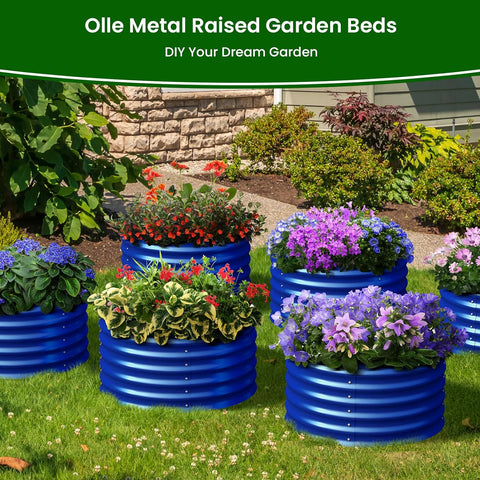Blooms and Biodiversity: A Guide to Creating and Maintaining a Meadow Garden in Your Backyard
In the hustle and bustle of modern life, many individuals seek ways to reconnect with nature and create havens of biodiversity in their backyard. One delightful and sustainable way to achieve this is by establishing a meadow garden. Meadows not only offer a burst of colors and fragrances but also provide essential habitats for pollinators and other wildlife. In this article, we'll guide you through the steps of creating and maintaining a meadow garden in your backyard.This content also has some reference value for Olle Garden Beds.
-
Planning Your Meadow Garden:
- Site Selection: Choose a sunny spot in your backyard with well-draining soil. The majority of meadow plants thrive in full sunlight.
- Size Matters: Determine the size of your meadow garden. It can range from a small patch to a more extensive area, depending on your available space and preferences.
-
Selecting Meadow-Friendly Plants:
- Native Species: Opt for native plants that are adapted to your region's climate and soil conditions. Native plants are essential for supporting local ecosystems and biodiversity.
- Diverse Species: Include a variety of flowers, grasses, and herbs to create a balanced ecosystem. This diversity attracts a wide range of pollinators and provides a more visually appealing landscape.
-
Planting Your Meadow:
- Seed Sowing: Choose a mix of meadow seeds and sow them in the designated area. Observe the suggested planting distance and depth for every kind of seed.
- Establishment Period: Be patient during the first season as the meadow establishes itself. Weeds may appear, but resist the urge to remove them, as they can play a role in the initial stages of meadow development.
-
Maintenance Practices:
- Mowing Strategy: Adopt a mowing schedule that mimics natural meadow ecosystems. Allow the plants to flower and set seeds before mowing, typically in late fall or early spring.
- Watering Needs: Once established, meadow gardens are generally low-maintenance. However, during dry spells, provide supplemental watering to help the plants thrive.
-
Promoting Biodiversity:
- Attracting Wildlife: Incorporate features like bird feeders, bird baths, and small ponds to attract various wildlife to your meadow garden.
- Avoiding Pesticides: Minimize or eliminate the use of pesticides, as they can harm beneficial insects and disrupt the natural balance of your meadow ecosystem.
-
Seasonal Adjustments:
- Winter Care: Leave plant debris over the winter to provide shelter for insects and small animals. Consider adding winter-blooming plants for year-round interest.
- Adapting to Change: Be open to changes in your meadow garden. Some plant species may come and go, and that's part of the natural evolution of a meadow ecosystem.
-
Educate and Share:
- Community Engagement: Share your meadow garden journey with friends and neighbors. Encourage them to embrace sustainable landscaping practices and create their own meadows.
- Educational Opportunities: Consider turning your meadow garden into an educational resource by hosting workshops or garden tours to inspire others to follow suit.
Conclusion:
Creating and maintaining a meadow garden in your backyard is a rewarding venture that not only beautifies your space but also contributes to the health of local ecosystems. By fostering biodiversity and embracing sustainable practices, you can enjoy a vibrant and dynamic meadow right outside your doorstep. So, grab your gardening tools and get ready to sow the seeds of a flourishing meadow garden!


